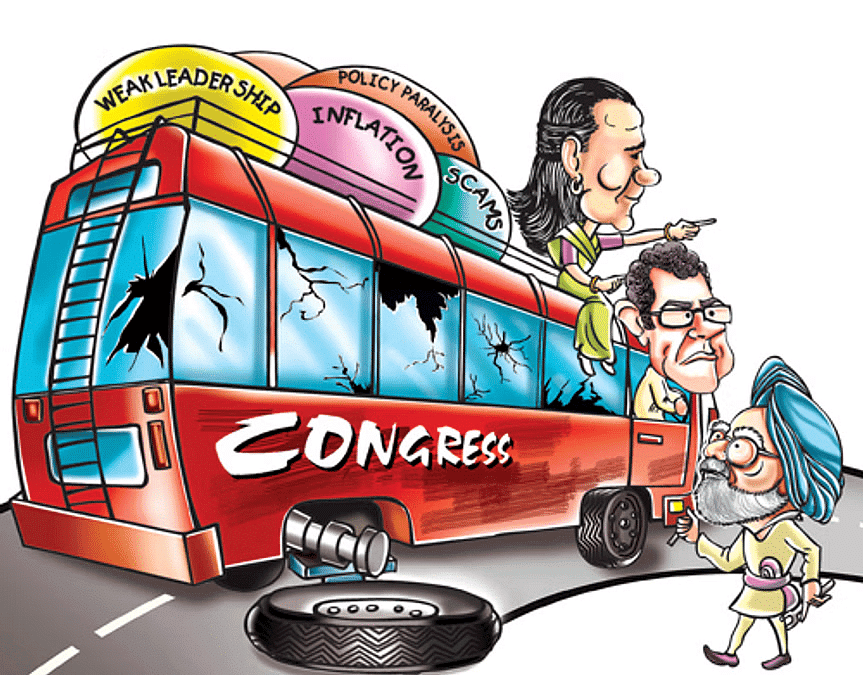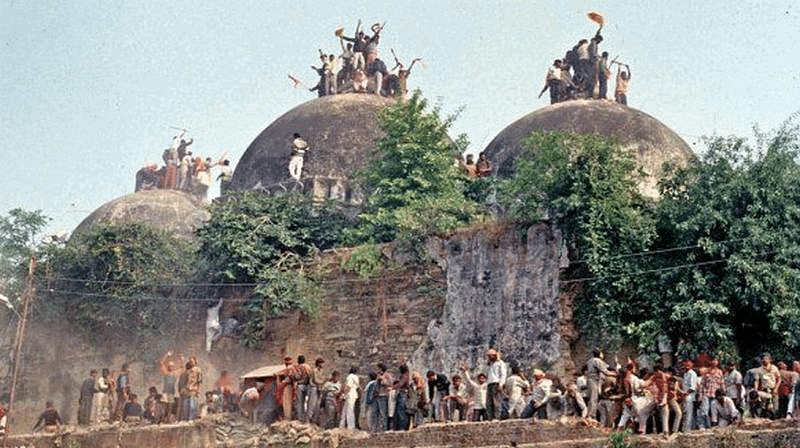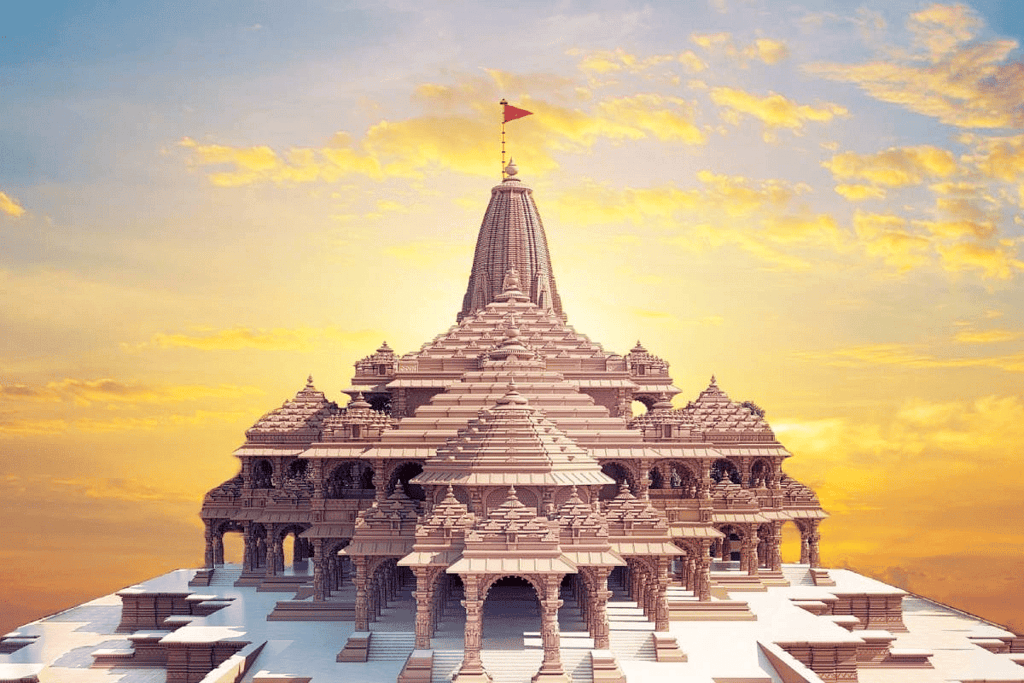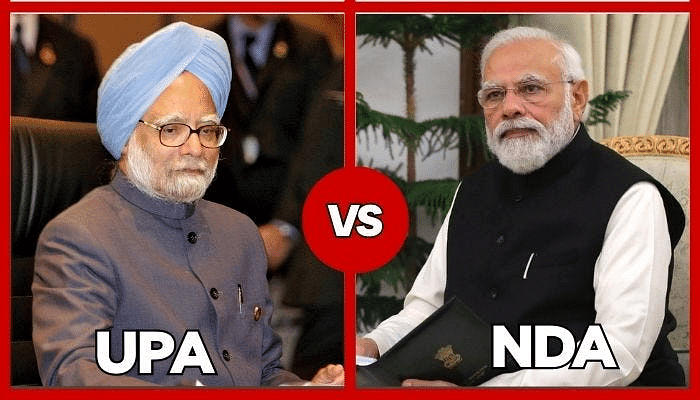Recent Developments in Indian Politics Class 12 Political Science
| Table of contents |

|
| Introduction |

|
| Context of the 1990s |

|
| Era of Coalitions |

|
| Political Rise of Other Backward Classes |

|
| Communalism, Secularism, Democracy |

|
| Emergence of a New Consensus |

|
| Conclusion |

|
Introduction
Since the late 1980s, India’s political scene has shifted from Congress dominance to a multi-party system, with regional and identity-based parties playing a larger role. Key developments include:
- Economic Reforms: Liberalization transformed the economy.
- Rise of Regional & Identity-Based Parties: Regional parties gained influence, reshaping politics.
- Ram Janmabhoomi Movement: Fuelled communal and identity-based politics.
- Mandalisation: Increased caste-based political representation.
The post-1989 era saw the emergence of multiple parties, preventing any single party from dominating and leading to coalition governments. These changes highlight the strength and adaptability of India’s democracy, raising questions about the impact of coalition politics on voter choices.
Context of the 1990s
Rajiv Gandhi became Prime Minister after Indira Gandhi's assassination. He led the Congress to a big win in the 1984 Lok Sabha elections. By the late 1980s, five key developments emerged that would significantly impact Indian politics.
1. The Diminishing Dominance of the Congress Party
- In 1989, the Congress party was defeated, dropping from 415 seats in 1984 to 197 seats.
- The 1989 elections marked the end of the 'Congress system.'
- Congress improved in 1991 but never regained its dominant role.
- Though still influential, the party lost its central position in the political system after 1989.
2. Rise of the Mandal Issue
- The 'Mandal issue' emerged in national politics when the National Front government decided in 1990 to implement the Mandal Commission's recommendation to reserve central government jobs for Other Backward Classes (OBCs).
- This led to violent protests across the country against the OBC reservations.
- The dispute between supporters and opponents of the policy significantly shaped Indian politics from 1989 onwards.
3. Shift in Economic Policy
- A major shift in economic policy began, known as the structural adjustment program or new economic reforms.
- Initiated by Rajiv Gandhi and becoming prominent in 1991, these reforms drastically changed the direction of India's economy since Independence.
- Despite criticism from various movements and organizations, successive governments have continued to implement these policies.
4. Impact of the Ram Janmabhoomi Dispute
- The long-standing legal and political dispute over the Ram Janmabhoomi Temple in Ayodhya began to significantly influence Indian politics.
- The Ram Janmabhoomi Movement became a central issue, reshaping discussions on secularism and democracy.
- These changes ultimately led to the construction of the Ram Temple in Ayodhya, following the Supreme Court's constitutional bench decision on November 9, 2019.
5. Assassination of Rajiv Gandhi and Change in Congress Leadership
- Rajiv Gandhi was assassinated in May 1991 by a Sri Lankan Tamil linked to the LTTE while campaigning in Tamil Nadu.
- In the 1991 elections, Congress emerged as the single largest party.
- After Rajiv Gandhi's death, Narsimha Rao was chosen as Prime Minister, leading the Congress party.
Era of Coalitions
The 1989 elections marked a critical shift in Indian politics, as the Congress party faced defeat but failed to secure a majority. Though Congress remained the largest party in the Lok Sabha, it opted to sit in the opposition due to the absence of a clear majority. This led to the formation of a coalition government by the National Front, an alliance of Janata Dal and other regional parties. The National Front received support from two ideologically opposite groups:
- BJP (Right-wing)
- Left Front (Left-wing)
However, despite this support, neither the BJP nor the Left Front joined the government, demonstrating the complexities and balancing acts in coalition politics.
Decline of Congress

- The defeat of the Congress party in the 1989 elections marked the end of its dominance over the Indian party system, which had been re-established earlier by Indira Gandhi in the late sixties after initial challenges.
- In the late sixties, the Congress party faced challenges to its dominance but managed to reassert its position under Indira Gandhi. However, the 1990s brought renewed challenges, marking a shift in the political landscape.
- Post-1989, India saw the emergence of a multi-party system where no single party could dominate or secure a majority of seats. This period was characterized by a diverse array of political parties gaining prominence.
- From 1989 until 2014, no single party achieved a clear majority in the Lok Sabha elections. This led to an era of coalition governments at the Centre, with regional parties playing a significant role in forming ruling alliances.
- In the 2014 and 2019 Lok Sabha elections, the Bharatiya Janata Party (BJP) achieved a clear majority on its own, marking a significant shift from the previous coalition era and establishing itself as a dominant force in Indian politics.
Alliance Politics
Emergence of New Political Forces
- The 1990s saw the rise of powerful political parties and movements representing Dalits and Other Backward Classes (OBCs).
- Many of these parties also represented strong regional interests.
United Front Government (1996)
- These parties played a significant role in forming the United Front government in 1996, similar to the National Front of 1989.
- The United Front included the Janata Dal and various regional parties.
- In 1996, the Left supported the United Front, while Congress provided support to keep the BJP out of power, reflecting the unstable political alliances of the time.
BJP’s Struggle and Rise to Power
- Despite becoming the largest party in the 1996 elections, the BJP couldn't form a stable government due to lack of majority support.
- The BJP eventually led a coalition government from May 1998 to June 1999 and was re-elected in October 1999, with Atal Bihari Vajpayee as Prime Minister.
- The Vajpayee-led government of 1999 was the first to complete its full term.
Era of Coalition Politics
- The 1989 elections marked the start of a long phase of coalition politics in India.
- Since then, eleven governments at the Centre have been coalition or minority governments supported by other parties.
- Governments such as the National Front (1989), the United Front (1996-1997), BJP-led coalitions (1998, 1999), and the United Progressive Alliance (UPA) (2004, 2009) all required participation or support from multiple regional parties.
Continuation of Historical Trends
- This coalition era is seen as a continuation of the 'Congress system,' where the Congress once acted as a coalition of various interests.
- The decline of Congress and rise of regional parties since the late 1960s weakened Congress but did not allow for a single-party dominance.
Shift in 2014
- The trend of coalition politics saw a significant shift in 2014 when the BJP won a clear majority on its own, marking a new phase in Indian politics.

Political Rise of Other Backward Classes
- When the support for the Congress among many sections of the ‘backward castes’ had declined, this created a space for non-Congress parties to get their support.
- Many of the constituents of the Janata party, like the Bhartiya Kranti Dal and the Samyukta party, had a powerful rural base among some sections of the OBC.
‘Mandal’ Implemented
- In the 1980s, the Janata Dal united various political groups with substantial support among the OBC communities, aiming to address their concerns and represent their interests.
- The Janata Party government appointed the Mandal Commission, chaired by Bindeshwari Prasad Mandal, to study backward class conditions.The Commission found low OBC representation in education and government jobs and recommended 27% reservations for them.
- The National Front government’s decision to implement the Mandal Commission's recommendations in 1990 was a pivotal moment. It called for reservations in central government jobs for OBCs, significantly influencing the political landscape.
- The implementation of the Mandal Commission's recommendations sparked a intense national debate about job reservations for OBCs. This debate heightened awareness among OBC communities about their social and political identity.
- The period saw the rise of various political parties focused on advancing the interests of OBCs. These parties advocated for improved opportunities in education and employment for OBCs.
- These emerging parties argued that OBCs, being a large segment of Indian society, deserved adequate representation in administration and a fair share of political power.
- The heightened awareness and political mobilization led to greater emphasis on ensuring that OBCs had their due share of political and administrative power, aligning with democratic principles.
Political Fallouts

Formation of BAMCEF (1978)
- The Backward and Minority Communities Employees Federation (BAMCEF) was established, not as a typical trade union, but to advocate for political power for the bahujan—including Scheduled Castes (SC), Scheduled Tribes (ST), Other Backward Classes (OBC), and minorities.
Path to BSP
- BAMCEF’s advocacy laid the groundwork for the Dalit Shoshit Samaj Sangharsh Samiti and eventually the Bahujan Samaj Party (BSP).
- These organizations were committed to improving the political and social standing of the bahujan communities.
Growth under Kanshi Ram
- Under Kanshi Ram, the BSP started as a small party with strong support from Dalit voters, mainly in Punjab, Haryana, and Uttar Pradesh.
- The BSP saw a breakthrough in the 1989 and 1991 elections, especially in Uttar Pradesh, marking the first time a party primarily backed by Dalit voters gained significant political success in independent India.
Kanshi Ram’s Vision
- Kanshi Ram’s vision for the BSP was based on pragmatic politics, recognizing that the Bahujans (SC, ST, OBC, and minorities) were the majority and could form a powerful political force due to their numbers.
BSP’s Evolution
- The BSP has grown into a major political force in Uttar Pradesh and beyond, initially strongest among Dalit voters but expanding its support to include various other social groups.
Dalit and OBC Politics
- Over time, Dalit and OBC politics have evolved independently and sometimes in competition, reflecting the diverse and complex nature of identity-based politics in India.
Communalism, Secularism, Democracy
Formation of the BJP
- After the Emergency period, the Bharatiya Jana Sangh merged with the Janata Party.
- When the Janata Party disintegrated, the Jana Sangh supporters formed the Bharatiya Janata Party (BJP) in 1980.
Early Ideology
- Initially, the BJP adopted a broader platform, including ‘Gandhian Socialism’ alongside cultural nationalism.
Shift to Nationalism
- By 1986, the BJP shifted its focus to nationalism as the core of its ideology and embraced Hindutva as a central theme for political mobilization.
Concept of Hindutva
- Hindutva, popularized by Vinayak Damodar Savarkar, emphasizes Indian identity based on the ‘fatherland’ (pitrubhu) and the ‘holy land’ (punyabhu).
- It advocates for a unified national culture, with Hindutva providing this cultural base.
Shah Bano Case Impact
- A significant event for the BJP was the Shah Bano case, where the Supreme Court ruled in favor of Shah Bano, a divorced Muslim woman seeking maintenance.
- The ruling was contested by some orthodox Muslims as an intrusion into Muslim Personal Law.
Legislative Response
- In response, the government passed the Muslim Women (Protection of Rights on Divorce) Act, 1986, which nullified the Supreme Court's decision.
- This move faced criticism from women’s organizations, Muslim groups, and intellectuals.
BJP’s Positioning
- The BJP criticized the Congress government’s action as ‘appeasement’ of the minority community.
- This critique helped the BJP position itself as a champion of Hindutva and nationalist causes.
Ayodhya Issue
1528: The Origin of the Dispute
- A three-dome structure was built at the site believed to be the birthplace of Shri Ram, a revered Hindu figure.
- The structure was marked by Hindu symbols and relics, sparking early conflicts over its significance.
Historical Documentation
- The district Gazetteers of Lucknow, Barabanki, and Faizabad document the ongoing disputes related to the Ayodhya site.
1949: A Turning Point
- The site was sealed in 1949 due to the onset of court proceedings, marking a significant escalation in the dispute.
1986: Court Ruling and Intensified Dispute
- The Faizabad district court ruled to unlock the three-dome structure, allowing worship at the site.
- This decision intensified the conflict, as the structure was believed to have been built over a Hindu temple.
Foundation Stone Ceremony
- A Shilaanyas (foundation stone laying ceremony) for a new temple was performed, but further construction was prohibited.
- This decision escalated tensions between the Hindu and Muslim communities.
1992: Demolition and Controversy
- The three-dome structure was demolished in 1992, an act that was seen by some critics as a challenge to the principles of Indian democracy.
- The demolition highlighted the intensity and complexity of the Ayodhya dispute.
Impact on Secularism and Democracy
- The Ayodhya controversy raised significant questions about secularism and democracy in India, impacting communal relations and political dynamics profoundly.

From Legal Proceedings to Amicable Acceptance
- Conflicts are a natural part of any society, but in a multi-religious and multi-cultural democratic society like India, they are generally resolved through legal and democratic processes.
- The Ayodhya issue was addressed through a range of democratic and legal procedures, including court hearings, mediation attempts, popular movements, and ultimately a verdict by the Supreme Court.
- On November 9, 2019, the Constitutional Bench of the Supreme Court delivered a unanimous 5-0 verdict to resolve the Ayodhya dispute, aiming to balance the interests of all stakeholders involved.
- The Supreme Court's verdict allocated the disputed site to the Shri Ram Janmabhoomi Teertha Kshetra Trust for the construction of a Ram temple. It also directed the government to provide an alternative site for the construction of a mosque for the Sunni Central Waqf Board.
 Ayodhya Ram Mandir
Ayodhya Ram Mandir
- The resolution of the Ayodhya issue demonstrated how democracy can handle conflicts in a pluralistic society while upholding the inclusive spirit of the Indian Constitution.
- The Supreme Court’s decision was based on evidence including archaeological excavations and historical records, reflecting a thorough and evidence-based approach to conflict resolution.
- The decision was celebrated by the society at large, reflecting a positive response to the resolution of a sensitive issue and showcasing the maturity of democratic processes in India.
- The resolution of the Ayodhya issue through judicial means exemplifies consensus building on a contentious topic and highlights the ingrained democratic ethos and civilizational maturity of Indian society.
Emergence of a New Consensus
- Analysis shows that since 1989 election, the votes polled by the two parties-Congress and BJP do not add upto more than 50 per cent.
- The political competition during the nineties is divided between the coalition led by BJP and the coalition led by the Congress.
Lok Sabha Elections (2004- 2019)

2004 Lok Sabha Elections
- Congress-led Coalition: The United Progressive Alliance (UPA), led by the Congress party, came to power by defeating the National Democratic Alliance (NDA).
- Support from Left Front: The UPA secured a majority with crucial support from the Left Front parties despite a close contest with the BJP and its allies.
- Partial Revival: The Congress party experienced a partial revival, increasing its seat count from 1991, though the vote difference between UPA and NDA was minimal.
- UPA Government: Under Prime Minister Dr. Manmohan Singh, the UPA government completed its term despite challenges, including the Left parties withdrawing support in July 2008 over the Indo-US nuclear deal.
2009 Lok Sabha Elections
- Increased Seats: The Indian National Congress (INC) and the UPA saw a significant rise in seats, with Congress increasing its count from 145 in 2004 to 206.
- Second Term: Dr. Manmohan Singh was re-elected as Prime Minister, leading the UPA government for a second term.
2014 Lok Sabha Elections
- BJP’s Victory: The BJP, under Narendra Modi, achieved a clear majority, winning 282 seats on its own, becoming the first party in 30 years to secure a single-party majority.
- Formation of NDA Government: Despite its majority, the BJP formed the NDA government with coalition partners, maintaining the importance of coalition politics.
- Significant Shift: The year 2014 marked a significant shift in Indian politics with the NDA government making rapid decisions in social sector, foreign policy, and economic policy.
2019 Lok Sabha Elections
- Further Strengthening: The BJP further strengthened its position by winning 303 seats on its own.
- Dominance and Coalition Politics: This success highlighted the party’s dominance while acknowledging the ongoing relevance of coalition politics.
Evolution of Party System:
- The party system in India evolved dramatically from the seventies to a dynamic landscape of coalition politics and shifting party dominance.
Growing Consensus
Support for New Economic Policies
- Despite opposition from some groups, most political parties support the new economic policies.
- They believe these policies will lead to greater prosperity and enhance India's status as a global economic power.
Recognition of Backward Castes' Needs
- There is widespread recognition of the need to address the social and political claims of backward castes.
- Major parties now support reservation of seats for backward classes in education and employment and are committed to ensuring adequate political power for Other Backward Classes (OBCs).
Blurring of State and National Party Distinctions
- The distinction between State-level and national-level parties is diminishing.
- State-level parties now play a central role in national politics and governance, reflecting their increased influence over the past two decades.
Shift to Pragmatic Coalition Politics
- Coalition politics has moved from ideological differences to pragmatic power-sharing arrangements.
- For example, many parties in the National Democratic Alliance (NDA), despite differing from the BJP's ‘Hindutva’ ideology, collaborated to form and sustain a government.
Transition from Congress Dominance
- The political landscape has shifted from Congress dominance to a more competitive environment.
- Despite this competition, there is an implicit agreement among major political actors on certain core issues.
Emergence of New Issues
- Popular movements and organizations are bringing new issues to the forefront, such as poverty, displacement, minimum wages, livelihood, social security, and justice.
- These movements emphasize the state's responsibility and highlight concerns related to class, caste, gender, and regional disparities.
Uncertain Future of Indian Democracy
- The future of Indian democracy remains uncertain, but the ongoing process of political churning and the engagement of various social movements suggest that democratic politics will continue to evolve and be a central feature of Indian governance.
Conclusion
Since the 1990s, Indian politics has shifted from a single-party dominance to a vibrant multi-party system. The decline of Congress, the rise of regional and identity-based parties, and the BJP’s emergence as a major force reflect this transformation. Despite intense competition and conflict, there is broad agreement on key issues like economic policies and social justice. This evolving political landscape highlights India’s commitment to democracy and its ability to adapt to new realities.
|
34 videos|308 docs|51 tests
|
FAQs on Recent Developments in Indian Politics Class 12 Political Science
| 1. What were the key political changes in India during the 1990s? |  |
| 2. How did communalism and secularism interact in the context of Indian politics in the 1990s? |  |
| 3. What role did Other Backward Classes (OBCs) play in shaping the political landscape of the 1990s? |  |
| 4. What is meant by the 'emergence of a new consensus' in Indian politics during this period? |  |
| 5. How did the events of the 1990s influence contemporary Indian democracy? |  |
















